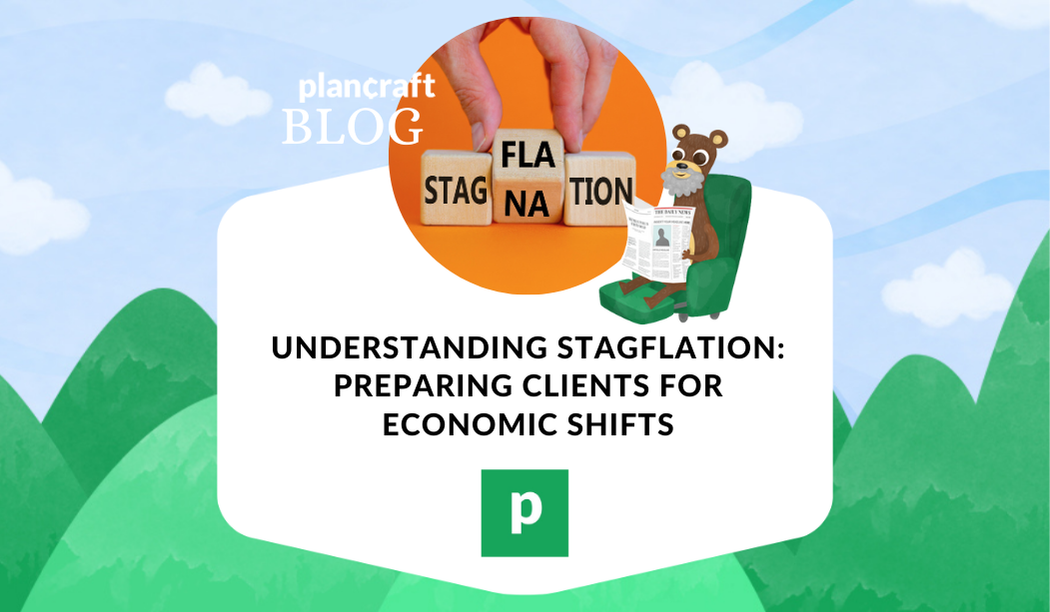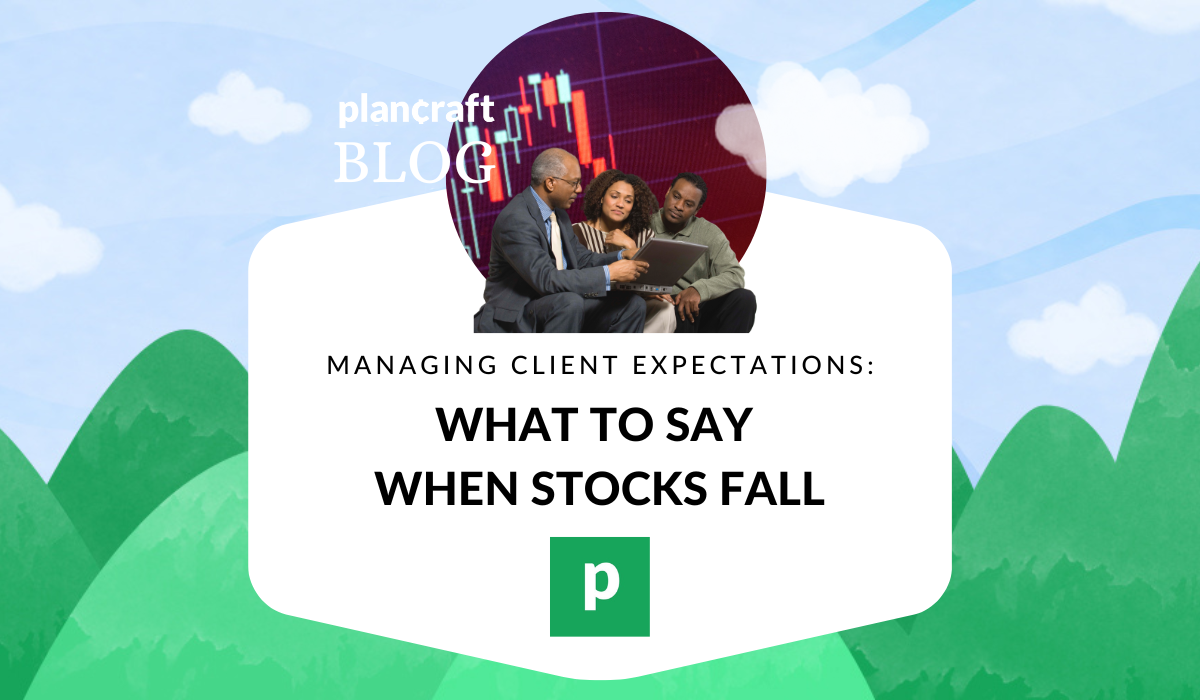Lately, there’s been a lot of buzz around the word stagflation. Maybe your clients are asking about it, or maybe they’re just feeling it without knowing what to call it.
Either way, as an advisor, this is your moment to step in with clarity, confidence, and a steady hand. Stagflation isn’t new, but it does bring a unique set of challenges—and a great opportunity for you to show just how valuable your guidance really is.
Let’s break down what stagflation actually is, why it’s showing up in conversations again, how it impacts your clients, and what you can do to help them stay on track.
What is Stagflation?
Stagflation happens when three things show up at the same time: prices keep rising, the economy slows down, and jobs get harder to find.
Usually, inflation and slow growth don’t hang out together. But when they do, it creates a tough environment where people are paying more for essentials while also feeling financially squeezed.
It’s like getting hit from both sides. The cost of living goes up, income doesn’t keep pace, and markets can get bumpy in response to all the uncertainty.
Why It’s a Hot Topic Right Now
Between recent U.S. policy shifts, tariff talk, and ongoing global supply chain stress, economists are keeping a close eye on signs of stagflation. Prices for basic goods and services are still elevated, growth is dragging, and people are starting to ask harder questions about what’s next.
Your clients may not come out and say “hey, is this stagflation?” But they’ll definitely feel it. And they’ll want to know what it means for their retirement, their savings, and their overall plan.
That’s where you come in.
What It Means for Clients
Even if they don’t know the term, your clients are likely experiencing the symptoms of stagflation already.
They might mention their grocery bills are climbing while their income hasn’t budged. Or they might notice that their investment accounts seem stuck in place or losing value. Some might be worried about layoffs or slowed hiring in their industries.
Here’s what you can help them understand:
- Rising prices mean their money doesn’t go as far
- Slower economic growth makes job security feel less certain
- Market performance may feel shaky or inconsistent
- They might need to revisit short and long-term goals to stay on track
Acknowledging the reality of what they’re feeling is the first step toward helping them regain control.
How You Can Help Clients Navigate It
Keep the Big Picture in Focus
This is where your experience matters. Remind clients that economic ups and downs are part of the journey. Markets go through cycles, and while stagflation can feel like a curveball, it’s something they can weather with the right plan.
Use historical context to show them how past periods of stagflation played out. Let them know that their plan was built to handle bumps like this, and that adjusting course is a normal part of staying on track.
Take a Fresh Look at Their Portfolio
Now’s the time to review allocations and make sure their investments are aligned with today’s climate and their current risk tolerance.
Some strategies to consider:
- Shifting toward sectors that tend to perform well during inflation, like energy, utilities, and consumer staples
- Rebalancing if certain holdings have become too aggressive or conservative
- Exploring options that help protect against inflation or add stability
Even small changes can make clients feel like they’re taking action, and that alone brings peace of mind.
Check in on Cash Flow and Spending
With higher prices, some clients may need to rethink how they’re managing income, expenses, and withdrawals.
Help them review:
- How much they’re spending each month
- Whether they’re withdrawing from the right accounts at the right time
- How their cash reserves are looking
This is especially important for retirees or anyone living on a fixed income. Even a few thoughtful adjustments can help make their money last longer and reduce stress in the meantime.
Be Proactive with Communication
Uncertainty tends to make people feel disconnected. The more they hear from you, the more confident they’ll feel.
A quick check-in, a timely email update, or a short call to see how they’re feeling goes a long way. You don’t need to have all the answers, but showing that you’re keeping an eye on things and that you’re here for them is everything.
It’s not about predicting the future. It’s about showing up when it matters most.
Final Thoughts
Stagflation might sound like a scary word, but it’s also an opportunity to strengthen trust, show leadership, and demonstrate the real value of your advice.
Your clients don’t need perfect answers. They need a steady guide who can help them adapt, stay focused, and keep working toward their goals even when the road gets a little rough.
If you’re ready to grow your book while helping more people navigate the uncertainty, Planswell can help. We deliver exclusive, high-intent households directly to you. No competition. No noise. Just real people looking for a better plan.
Let’s help them find it—together.









